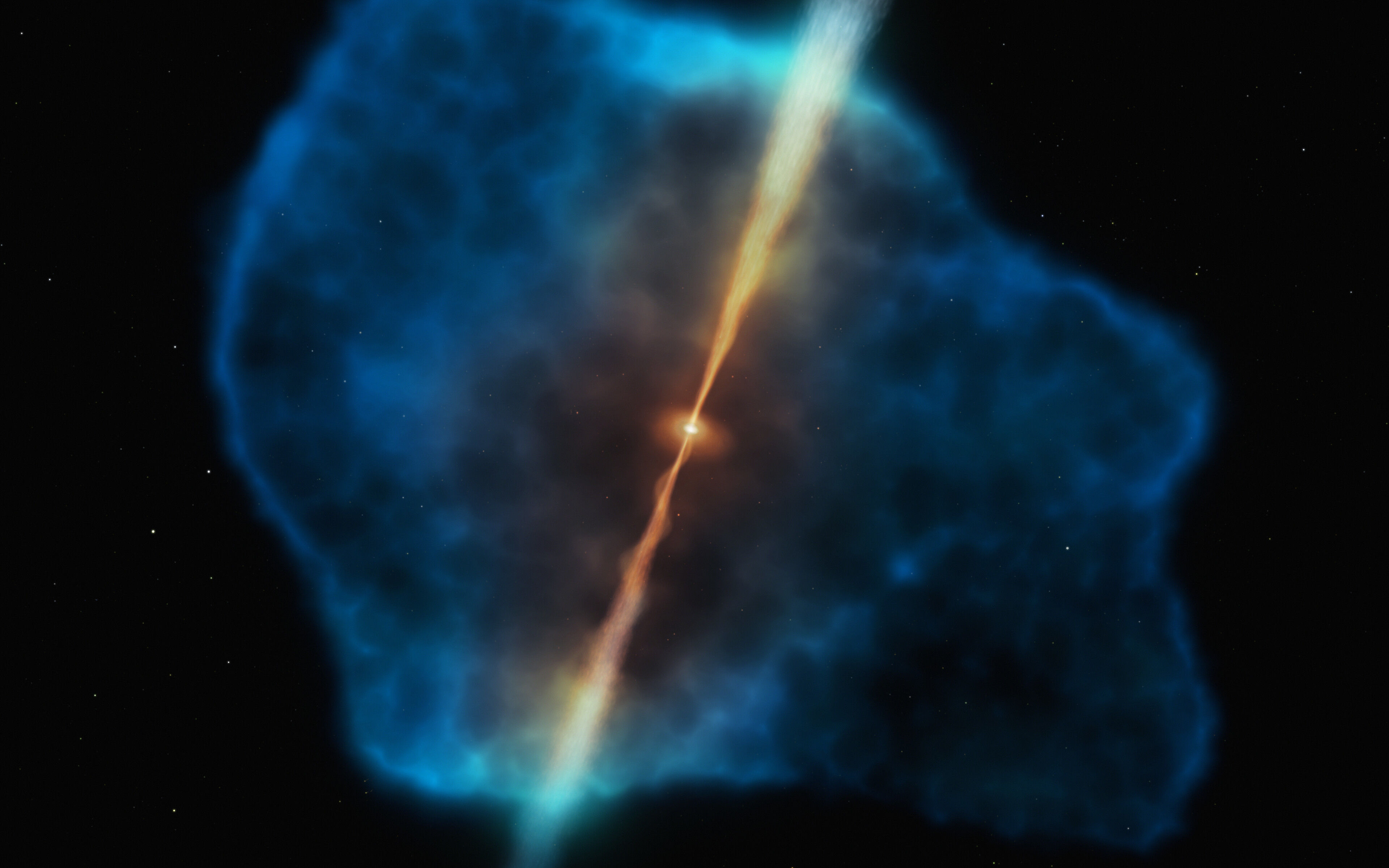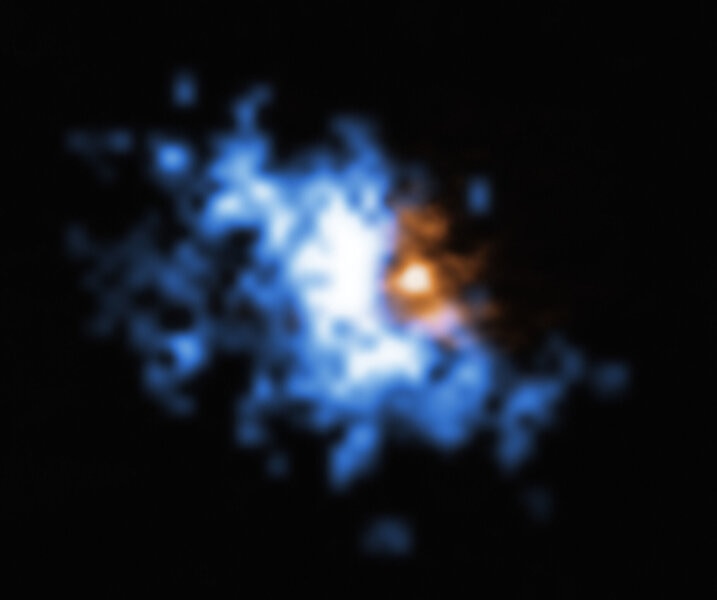Create a free profile to get unlimited access to exclusive videos, sweepstakes, and more!
The care and feeding of baby supermassive black holes

For a couple of decades, astronomers have had something of a thorny problem: How did supermassive black holes get so supermassive?
We see these monster black holes in the centers of pretty much every big galaxy, some with millions or even billions of times the mass of the Sun. By studying lots and lots of them, we've figured out that they form along with the galaxy itself, and the two interact with each other as they grow. When we measure certain characteristics about the host galaxy, we find that they correlate well with the mass of the black hole in their center. The only way that can happen is if there is some sort of feedback between the two. For example, the spread of velocities of stars orbiting the galaxy in its central bulge gets bigger if the black hole has more mass. Other examples abound.
So it makes sense that they formed together, affecting each other. That means these black holes are old; we see galaxies forming at the edge of the observable Universe. Light takes so long to get here from there that we see these galaxies when the Universe itself was less than a billion years old. We also see lots of evidence that the black holes back then were already pretty dang massive, some already over a billion solar masses!
And that's the problem. Problems, I should say. One problem is that there's only so much gas around a galaxy to feed on. Some of it goes into making stars, and some into growing the black hole. But some of these galaxies are producing truly prodigious amounts of stars, with star formation rates up to a hundred times what the Milky Way is doing today (and we're considered to be making stars at a decent rate). That means a lot of the gas is going into making stars, and, up until now, observations of distant galaxies show there's just not enough gas to do that and make a big black hole at the same time.
But new observations indicate that's not the case. Astronomers looked at 31extremely distant quasars, galaxies with actively feeding black holes in their hearts. These quasars are all so far away that we see them as they were when the Universe itself was less than 900 million years old (it's 13.8 billion years of age now). So we're seeing these galaxies when they were infants.
Using a special camera on the Very Large Telescope called MUSE, they were able to take spectra of these very distant beasts, breaking the light up into individual colors, allowing them to look for the fingerprints of different kinds of gas in them. What they found is amazing: a dozen of the quasars had huge amounts of hydrogen gas around them, reservoirs with around a billion solar masses in them! That's enough to both feed the black holes in their hearts as well as form the stars at the high rates seen.
These clouds of gas are galaxy-sized, roughly 100,000 light years across, which is around the size predicted to be able to perform both functions; this cool gas can flow down into the galaxy where it can make stars and nourish the black holes.
These clouds are glowing fiercely, with a billion to 100 billion times the energy of the Sun! But even then, they're so far away, removed from us at such a terrible distance, that they evaded detection until now. It seems that that big problem about how to grow supermassive black holes is at least partially solved.
… but I did say above that there are problems, plural, with growing them that big.
To get that massive, the black hole has to eat a vast amount of material. It's hard to get a black hole to gobble down matter so voraciously, though. As it falls in the material forms a huge disk, called an accretion disk. Stuff near the black hole whirls around it extremely rapidly — near the speed of light! — while stuff farther out is slower. That means there's a lot of friction in the disk, and friction means heat. The disk gets so hot that it starts to blow out a powerful wind of subatomic particles; this flows outward and can be strong enough to slow incoming material to a stop. When that happens the black hole can't feed anymore, so it can't grow.
When you do the math, you find that getting a black hole to be really big really fast is really hard. It's still a problem in astrophysics, though a lot of progress has been made recently.
Neither problem is 100% solved yet. This new research is a big step, and I think an important one, since it shows the gas is there to be used, at least in some galaxies. Hopefully as more galaxies at the edge of the observable Universe are analyzed we'll get more data on this.
Whenever we push our observations really far, we find mysteries, things that don't seem to add up. Sometimes it turns out we're just wrong, and what we thought the Universe was doing was incorrect. But when our conclusions are correct yet the mystery remains, like in this one, it shows us the Universe is doing everything right, but we're just still in the dark about how. More info is needed, so we have to keep probing, keep querying the cosmos until its secrets are come to light. It's one of the most fun parts about doing science.




























